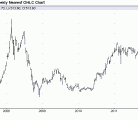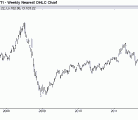An interesting question was touched on by both John Duvenaud and Mike Jubinville at their presentations at St. Jean Farm Days this week. Like any analyst trying to give an informed guess on what’s going to happen in the markets this year – a perilous task but the only thing that really counts – they had to discuss what to me has been the central question of the ag commodity markets since 2006: What’s driving crop prices, supply and demand fundamentals or major world macro forces? (This post isn’t about what they said, but what I think on the subject, so don’t blame them for the stuff below! This is me thinking aloud.)
Read Also

Farmer ownership cannot be seen as a guarantee for success
It’s a powerful movement when people band together to form co-ops and credit unions, but member ownership is no guarantee of success.
We’re used to that question now, because we all repeat it all the time. I’m always pondering the point. But it wasn’t always this way. Before 2006 the ag markets were almost completely dominated by the ag-specific stats of supply and demand and the interrelation of crops with crops and crops with livestock. A generation of market analysts grew up with that focus. From 1982 to 1998 commodities were overwhelmingly dominated by supply and demand concerns specific to individual commodities, and small inter-commodity relationships, such as the corn-soybeans spread.
But the world shifted into a long term commodity bull market some time in the late 1990s, and everything has shifted. A lot of that has to do with the overall supply of commodities, and that’s what drives things like the investment in and development of alternative fuels like ethanol and biodiesel, which wouldn’t have grown like they have without high oil prices. And that additional demand has a big impact on crop prices. But most of the price of crops is now determined by the overall level of the commodities complex, with specific crop S and Ds restricted to marginal spread relationships between various crops. These days, whether canola is $13 per bushel or $8 per bushel has a lot more to do with the price of crude oil and gold than with the amount of canola in store. Specific crop fundamentals can move crops a buck or two in whatever direction, but from a base set by the overall commodities complex. Just look at the situation with wheat: the world has piles of the stuff, but prices are much, much higher than they would have been a few years ago if only the S and Ds counted.
And the selling-off in recent months has little to do with crop-specific stuff, but has more to do with correcting an overbought commodities market and the implications on commodity demand of the Eurocrisis, the weak U.S. economy and a slowing BRIC.
Yesterday’s crop selloff was interesting in terms of analysis, because you could apply the handly old crop-specific S and D stuff, or look at the broader picture.
There was a weather forecast for rain in the next few days in dry Argentina. Ahhh, that’s why crops sold off. Everything was down: corn 15 cents, soybeans down 15 cents, wheat down 20 cents, roughly. But why did lean hogs and cattle sell off too?
Just go look at gold and oil, and there’s your answer. And the higher U.S. dollar index. That’s what really drove things yesterday, methinks, and all the S and Ding you attempt will just provide a handy explanation, without giving the real answer.
So that’s the weird and wacky world we live in today, where we worry all the time about crop prices and want to find croppy reasons to form some sort of reasonable expectations, but for about 75 percent of where crop prices are going to go this year, we need to forecast the world economy, the currency markets and the direction of the commodities complex, which most of us aren’t experts in.
So we all stick to microanalyzing the crop markets and crop production and consumption stats around the world, even though that now represents only about 25 percent of the price for the crop.
Really, if you want to know what’s going to happen to canola, spring wheat and oat prices in 2012, come up with a forecast for the world economy, the strength of the U.S. dollar, and the strength or weakness of the overall commodities complex.
And heck, why not throw in some crop specific S and Ds, just for old time’s sake?

















